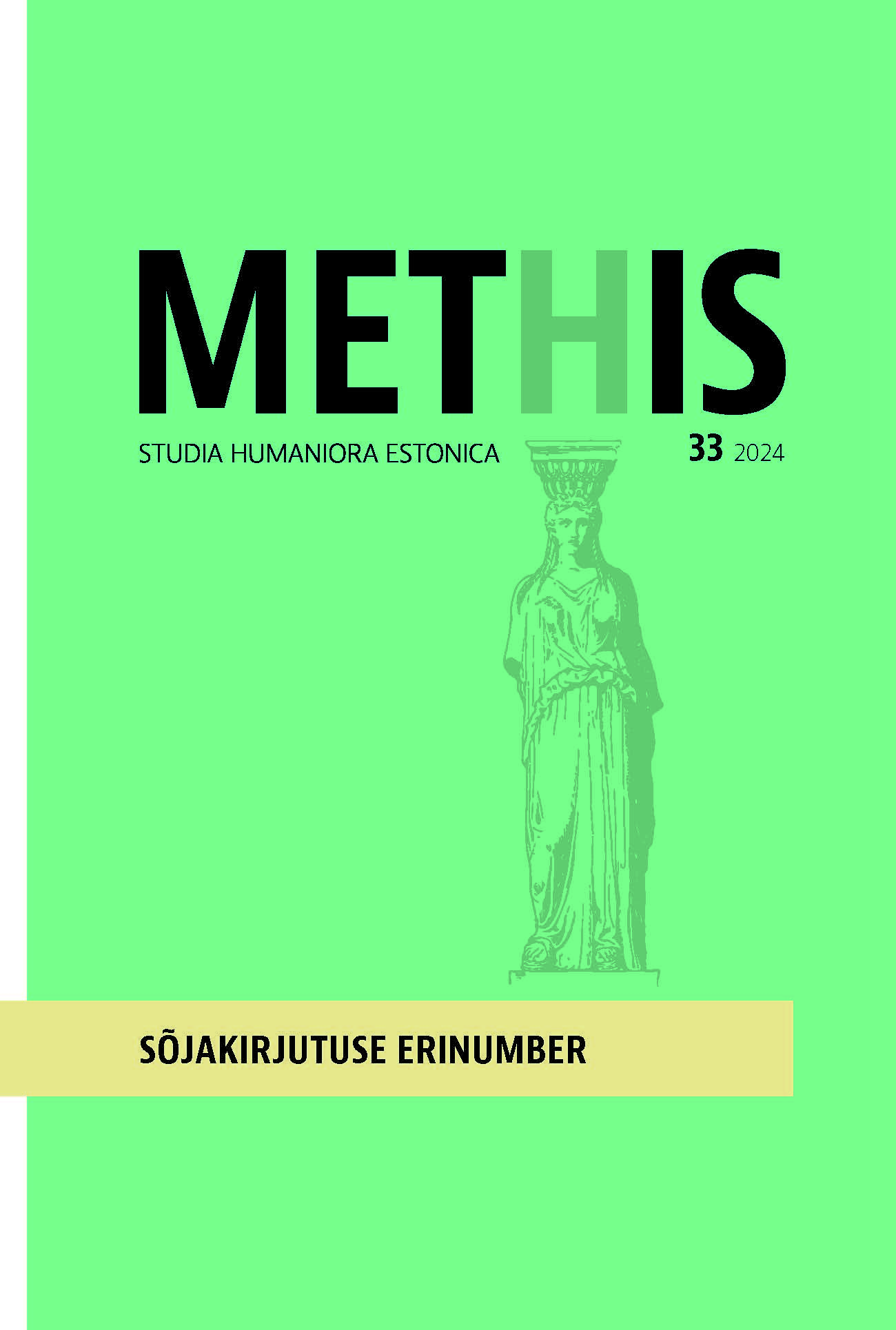„Looduse universaal-biblioteek“: raamatusarja juhtumiuuring / Universal Library by Loodus (1927–1931): a case study of the book series
DOI:
https://doi.org/10.7592/methis.v26i33.24141Keywords:
publishing house Loodus, Universal Library by Loodus (LUB), 1927–1931, book series, publishing of fiction, translations of fiction, kirjastus Loodus, LUB, raamatusarjad, ilukirjanduse väljaandmine, ilukirjanduse tõlkedAbstract
Teesid: Artiklis on vaatluse all kirjastuse Loodus (1920–1940) raamatusari „Looduse universaal-biblioteek“ (1927–1931), mida võib lugeda esimeseks järjepidevalt ilmunud täiskasvanutele mõeldud tõlkekirjanduse sarjaks Eesti Vabariigis. Tuginedes arhiivi- ja ajakirjanduslikule materjalile, kirjastuse Loodus kirjastatud väljaannetele ning kaasaegsete mälestustele, püüan rekonstrueerida sarja tervikloo ning ja mõtestada selle rolli kirjastuse Loodus arengus ja Eesti tõlkeloos. Selleks annan lühikese ülevaate kirjastusest Loodus ja tema tegevustest ilukirjanduse väljaandmise kontekstis Eestis, avan sarjale seatud ootuseid ja müügistrateegiat, analüüsin sarjas ilmunut, tutvustan ilmunud tõlgetega seotud isikuid ja poleemikat. Huvitava pilgu lugejakonnale ja selle arvamusele sarjast ning kirjandusest üldisemalt lubavad heita sarja algusaastatel ilmunud ankeetküsitluse analüüsid.
The article gives an overview of the book series “Looduse Universaal-biblioteek” (Universal Library by Loodus, LUB; 1927–1931). The series was given out by publishing house Loodus (Nature; 1920–1940), the company that became the biggest and most successful publisher in the interwar period Estonia. The series is considered the first consistently published translation series of literary works for adult readers in the Republic of Estonia and assumes historical significance. The main objective of the article is to reconstruct the comprehensive story of the series and understand its role in the development of the publishing house and in the Estonian translation history. The sources used are archival documents and interwar period newspaper articles, publications by Loodus and testimonials of the contemporaries.
In the article I give a short overview of the publishing house Loodus and its contribution to literary translations in Estonia, introduce the goals and expectations for the series, the marketing strategy, analyse what was published, and touch on the subject of translators and translations.
Functioning as a popular series for a diverse readership, the aim of the series was to introduce Estonian readers to the latest foreign literature and create a habit of buying books; the latter was encouraged by low price. Introduction to the book series in magazine “Kirjanduslikke Uudiseid” (published by Loodus, editor-in-chief Hans Männik, one of the founders and head of the publishing house, also editor-in-chief and managing editor of LUB) promises professional translations from original languages. Yet, the constant need for translations resulted in the providing opportunities for novice or occasional translators as well.
Important factors were affordability, regularity and compact format. Initially issued every Saturday, totalling 52 releases annually, the typical issue spanned 62–64 pages. From the second quarter of 1930, double issues were released twice a month, occasionally extending to triple and quadruple issues. Priced at 25 cents per single issue, an annual subscription cost 12 kroons. The initial print run was over 4000 copies, diminishing to 1850 in the final year.
Commencing with John Galsworthy’s “The First and the Last” on December 31, 1927 (translated by Mihkel Reiman), the series concluded with issue 179–180 (Henri Duvernois “La fugue”, translated by Mart Luht) in December 1931. 109 titles appeared in 180 issues, only 5 of them by Estonian authors. Translated literature encompassed 105 works from 80 authors, translated from 11 languages by 45 translators (published under 47 distinct names, two known pseudonyms have been excluded). About one-third of the titles had a foreword. Its existence and length were likely directly dependent on the strict format of the book.
Though the translations underwent scrutiny from the publishing house, the series faced some criticism, particularly regarding claims of abridgment. However, several titles published in the series were included in the recommended lists: the list to public libraries by the Ministry of Education and Social Affairs and to home libraries by The Estonian Book Year Committee in 1935.
A lot of emphasis was put on marketing, including pre-ordering (important role was played by book agents collecting orders in the countryside), an extensive sales network, advertisements, campaigns (e.g. free books with the pre-order), literary evenings. A reader survey questionnaire was published at the end of the issue until issue 66/67 (inclusive) to find out readers' preferences, with respondents entered into a draw for travel tickets. The analyses of these questionnaires provided valuable insights into readership, its opinions on the series and literature at large.
The contribution of the Universal Library by Loodus to the Estonian literary field should not be underestimated. The series significantly expanded the selection of translated authors, making it a tool for introducing translated literature and new writers and fostering opportunities for emerging translators. Moreover, it positioned the publishing house successfully in the translational fiction market and laid the foundation for a genre-diverse book series magazine. The format that remains vibrant in cultural sphere in Estonia to this day through the book series (officially categorized as magazine) “Loomingu Raamatukogu” (The Library of Creation) by Estonian Writers’ Union.


